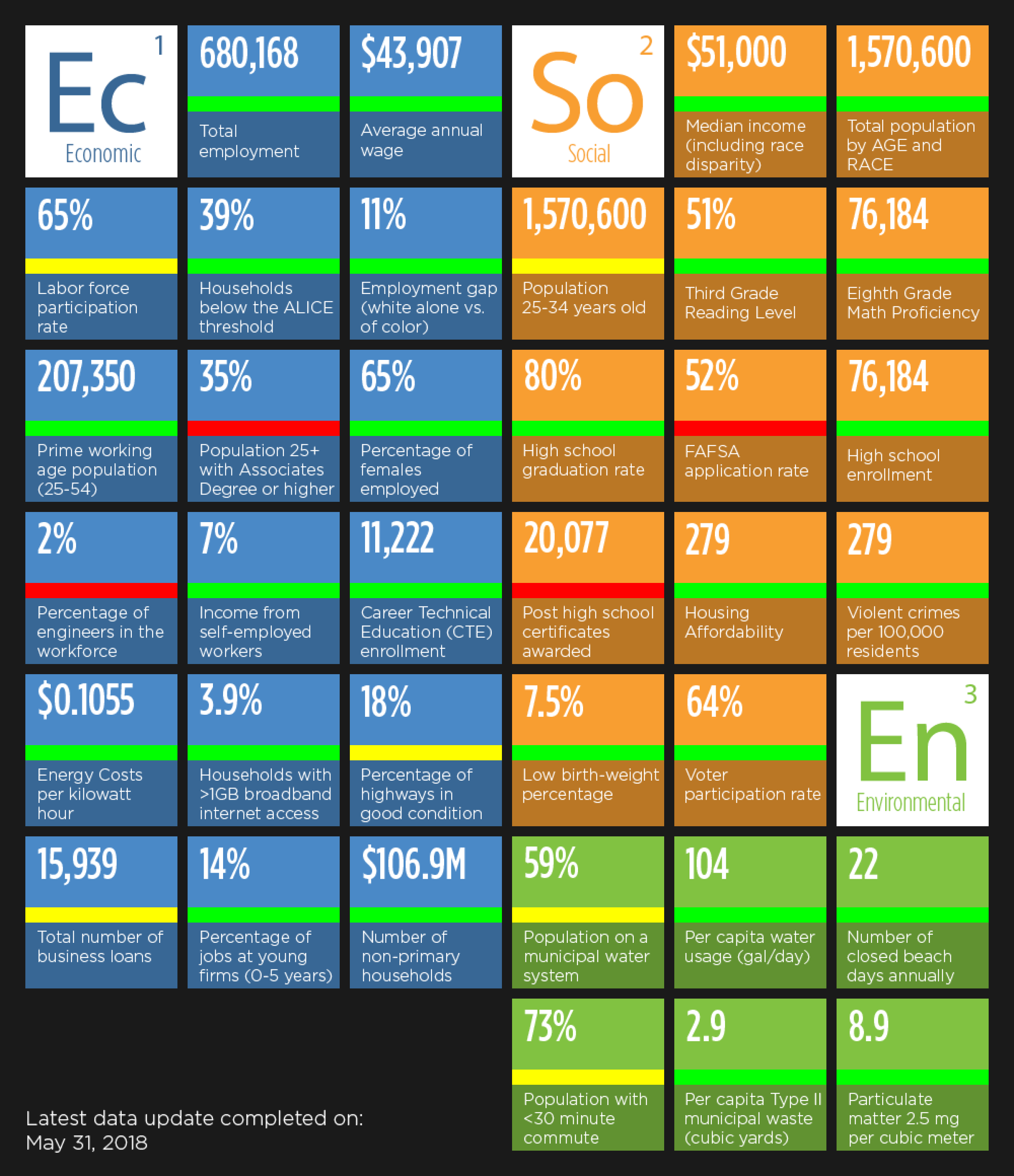September 20th, 2018
Regional leaders launch redesign of West Michigan Prosperity Dashboard
West Michigan’s leading economic development, workforce development, and infrastructure leaders have launched a redesign of the West Michigan Regional Dashboard, an online tool that tracks the region’s progress on critical economic, environmental, and social indicators.


West Michigan’s leading economic development, workforce development, and infrastructure leaders have launched a redesign of the West Michigan Regional Dashboard, an online tool that tracks the region’s progress on critical economic, environmental, and social indicators.
The goal of the dashboard is to inform, educate, and focus regional strategies to increase West Michigan’s overall health and prosperity. Originally launched in February 2017, the dashboard created a common set of measurements by which to measure West Michigan’s growth and prosperity. Previously, there was no coordinated measurement tool for the region. Since its launch, the dashboard has already received almost 6,000 visitors.
The updated dashboard features a more user-friendly design and the latest available data. New indicators have been added to the dashboard, and several have been removed due to data quality issues. There are now a total of 37 indicators: 17 economic, 14 social, and six environmental. All indicators are believed to fall within the sphere of influence of at least one regional partner organization or stakeholder.
New indicators added include:
· Prime working age population (25-54). Measures the strength of an economy and society, as this cohort generates most goods, services, earnings, and tax revenue.
· Total number and value of small business loans. Represents the lending activity of local, regional, and national banks to growing West Michigan businesses.
· Percentage of jobs at young firms (0-5 years old). Demonstrates strength of the entrepreneurial ecosystem.
· Seasonal residential property tax base. Revenue from seasonal and secondary homes provides critical tax revenue for municipalities across the region.
· 8th grade math level. An indicator of potential future poverty rates, as low math levels in 8th grade are tied with a higher likelihood of not completing high school.
· Housing affordability. Rent-burdened residents are more likely to have difficulty affording necessities like food, clothing, transportation, and medical care.
The West Michigan Regional Prosperity Alliance, The Right Place, Inc., and nine other regional organizations collaborated to identify these new indicators and update the dashboard. The initiative is funded and supported by the West Michigan Regional Prosperity Alliance.
TO ACCESS THE WEST MICHIGAN REGIONAL DASHBOARD
The regional dashboard can be accessed online at www.wmdashboard.org.